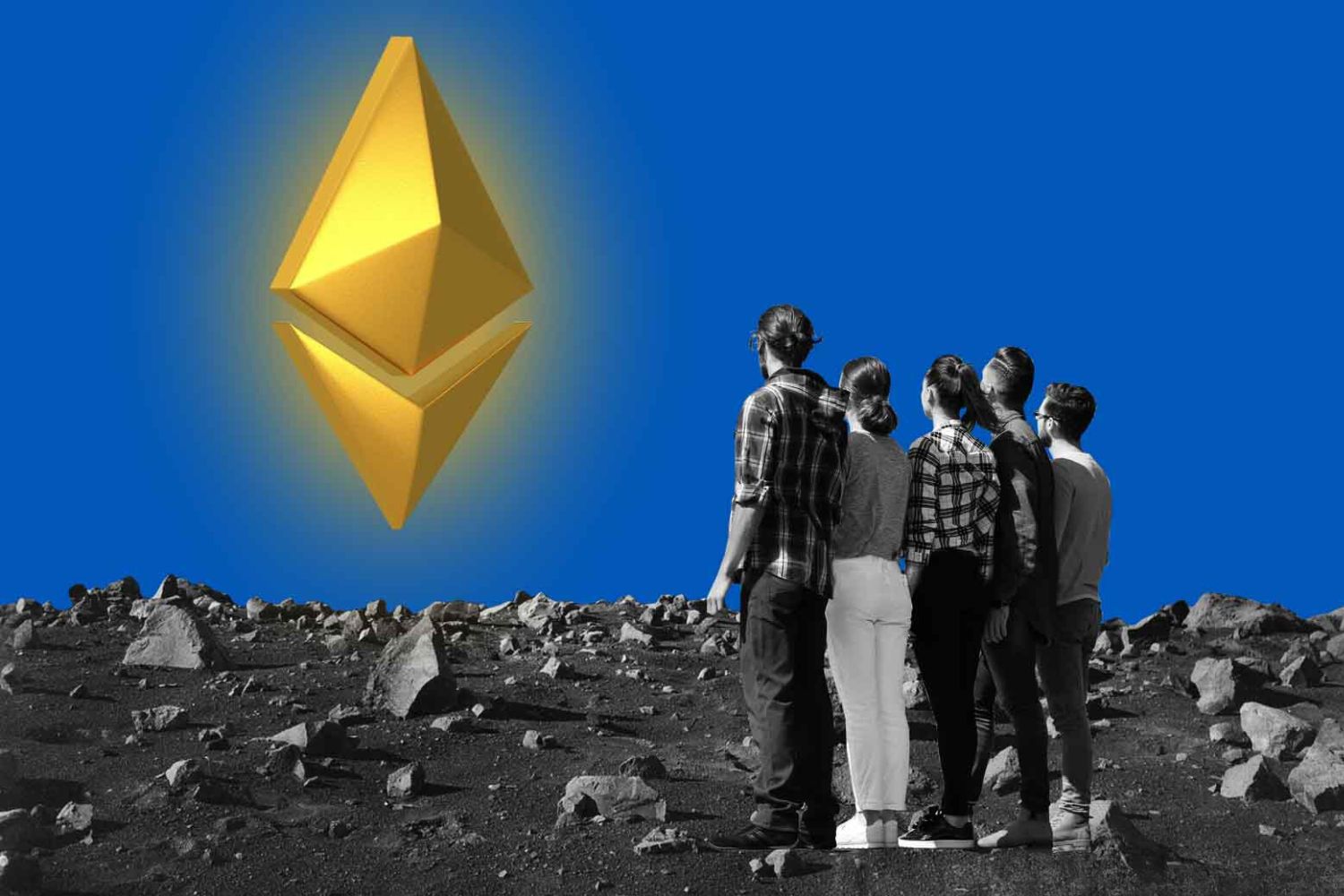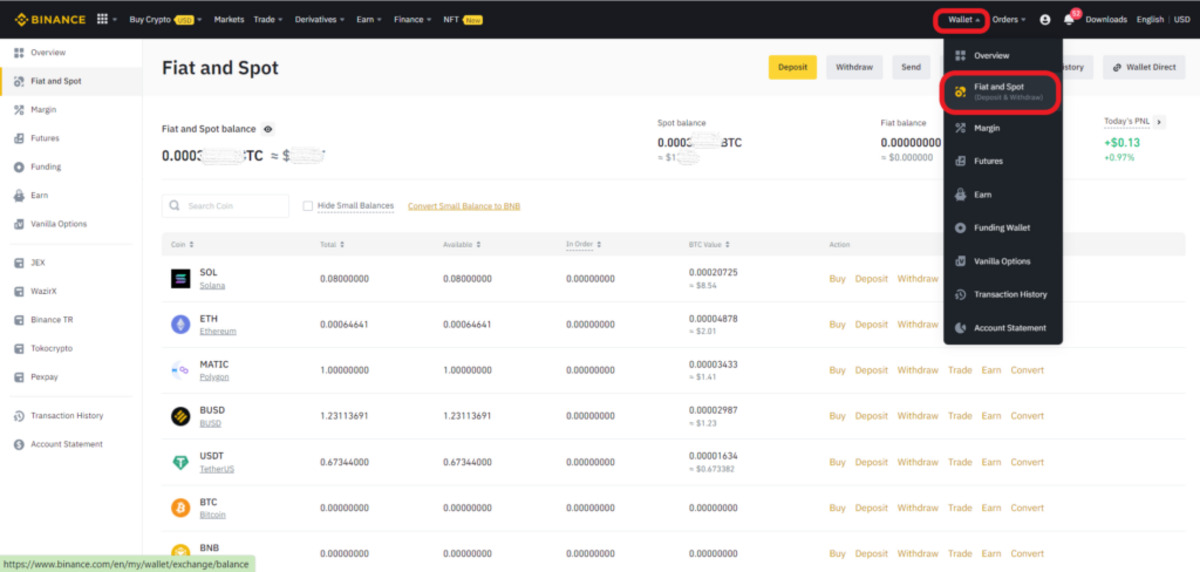Introduction
Welcome to the world of Ethereum, a revolutionary technology that has taken the digital landscape by storm. In recent years, Ethereum has become a buzzword in both the tech and finance industries, captivating the attention of developers, investors, and enthusiasts alike. But what exactly is Ethereum, and why has it gained such immense popularity?
At its core, Ethereum is an open-source blockchain platform that enables developers to build and deploy decentralized applications (DApps). Created by Vitalik Buterin in 2015, Ethereum introduced a groundbreaking concept – the smart contract. This concept revolutionized the way we interact with blockchain technology, providing a secure and transparent framework to execute self-executing contracts without requiring intermediaries.
Unlike Bitcoin, which primarily serves as a digital currency, Ethereum expands the blockchain’s functionality to accommodate a wide range of decentralized applications. By utilizing its native cryptocurrency called Ether (ETH), Ethereum allows developers to create and deploy smart contracts that can automate a wide variety of processes, from financial transactions to asset ownership to decentralized governance.
The rise of Ethereum can be attributed to its versatility and potential to disrupt various industries. Its flexibility and programmability have made it the go-to platform for building decentralized applications, paving the way for the emergence of a new era of innovation and financial possibilities.
However, Ethereum’s journey has not been without challenges. In 2016, the platform faced a major setback when the Decentralized Autonomous Organization (DAO), a smart contract-based investment fund, was exploited, resulting in the loss of millions of dollars worth of Ether. This incident led to a hard fork that created Ethereum Classic, a separate blockchain that maintained the original transaction history.
Despite this setback, Ethereum continues to evolve and improve. The platform is currently undergoing a major upgrade known as Ethereum 2.0, which aims to address scalability issues and improve the network’s efficiency and security. This upgrade introduces the Beacon Chain, which will eventually transition Ethereum from a proof-of-work (PoW) to a proof-of-stake (PoS) consensus mechanism.
In recent years, Ethereum has also played a significant role in the rise of decentralized finance (DeFi). With a vibrant ecosystem of protocols and applications, Ethereum has become the foundation for various financial services, including lending, borrowing, decentralized exchanges, and yield farming. The combination of smart contracts and cryptocurrencies has unlocked unprecedented opportunities for individuals worldwide, democratizing access to financial services and challenging traditional centralized systems.
The future of Ethereum is bright and full of potential. As it continues to mature and expand, Ethereum holds the promise of transforming industries, revolutionizing finance, and empowering individuals to take control of their financial destiny. With ongoing developments and innovations, the Ethereum community remains motivated to build a more secure, scalable, and decentralized ecosystem for the world to embrace.
The Rise of Ethereum
In a relatively short period, Ethereum has achieved remarkable success and gained widespread recognition in the blockchain and cryptocurrency space. Since its launch in 2015, the platform has seen exponential growth and has become a driving force behind the digital revolution.
The rise of Ethereum can be attributed to several key factors. First and foremost, Ethereum introduced the concept of smart contracts, which opened up a whole new realm of possibilities for blockchain technology. Smart contracts are self-executing agreements that automatically execute predefined conditions and actions when specific criteria are met. This innovation allowed for the automation of complex processes, eliminating the need for intermediaries and revolutionizing traditional industries such as finance, insurance, and logistics.
Another significant factor contributing to Ethereum’s rise is its vibrant and diverse community. The Ethereum community consists of developers, entrepreneurs, investors, and users who are passionate about the platform’s potential to disrupt existing systems and create innovative solutions. This active ecosystem fosters collaboration, promotes constant development, and spurs the creation of decentralized applications (DApps) that leverage the power of Ethereum’s blockchain.
In addition, Ethereum’s native cryptocurrency, Ether (ETH), has played a crucial role in its rise. As the fuel that powers the Ethereum network, ETH is used to execute smart contracts and pay for transaction fees. It also serves as an investment asset, attracting speculative traders and investors looking to profit from the platform’s growth and potential for adoption.
Furthermore, Ethereum’s open-source nature has allowed for continuous innovation and improvement. Anyone can contribute to the development of the platform, leading to a rich ecosystem of tools, libraries, and frameworks that simplify the building of DApps. This openness has encouraged widespread adoption and has enabled developers to bring their ideas to life on the Ethereum blockchain.
Ethereum’s success has also been amplified by its ability to attract major players in the tech and financial industries. Well-known companies, including Microsoft, JPMorgan Chase, and IBM, have recognized the potential of Ethereum and have partnered with or utilized its technology to enhance their own operations. These partnerships and collaborations have not only brought credibility to the platform but have also propelled Ethereum into the mainstream consciousness.
Additionally, Ethereum has become a hotbed for initial coin offerings (ICOs), a fundraising method where companies issue tokens on the Ethereum blockchain in exchange for funding. This has created a wave of innovation and entrepreneurship, allowing startups from around the world to raise capital and launch their projects without the need for traditional venture capital.
With its solid foundation, groundbreaking technology, and widespread adoption, Ethereum has solidified its position as the leading blockchain platform. It has inspired a new wave of innovation and has sparked the imaginations of developers, entrepreneurs, and individuals seeking to participate in the decentralized revolution.
What is Ethereum?
Ethereum is an open-source blockchain platform that is revolutionizing the digital landscape. It was created by Vitalik Buterin in 2015, with the aim of expanding the capabilities of blockchain technology beyond just a digital currency. Unlike Bitcoin, which primarily serves as a peer-to-peer electronic cash system, Ethereum is designed to be a decentralized platform for building and running smart contracts and decentralized applications (DApps).
At its core, Ethereum is a global network of computers that work together to maintain a shared database, also known as a blockchain. This database stores the complete history of all transactions and smart contracts executed on the platform. Ethereum’s blockchain is secured by a consensus mechanism called proof-of-work (PoW), where miners compete to solve complex mathematical problems to validate transactions and add blocks to the chain.
One of Ethereum’s most significant innovations is the concept of smart contracts. A smart contract is a self-executing contract with predefined rules and conditions. Once these conditions are met, the contract automatically executes the agreed-upon actions, eliminating the need for intermediaries or third-party arbitration. Smart contracts are written in a programming language called Solidity, allowing developers to create a wide range of applications and services that can be automated and executed on the Ethereum blockchain.
Ethereum’s flexibility and programmability have made it the platform of choice for developing decentralized applications. DApps built on Ethereum can range from simple games and financial applications to more complex systems handling supply chain management, decentralized finance (DeFi), and decentralized governance. These DApps leverage the security, transparency, and immutability offered by the Ethereum blockchain.
Ethereum’s native cryptocurrency, Ether (ETH), plays a central role in the platform’s ecosystem. It serves as both a medium of exchange and a value-transfer mechanism within the Ethereum network. Ether is used to pay for transaction fees, computational services within smart contracts, and as a store of value. Additionally, Ether is traded on cryptocurrency exchanges and is seen as a speculative investment by many.
As Ethereum continues to evolve, its development community seeks to address scalability and efficiency challenges. Ethereum 2.0, a major upgrade to the platform, is currently underway. This upgrade will introduce a shift from proof-of-work to a more energy-efficient consensus mechanism called proof-of-stake (PoS). Furthermore, Ethereum 2.0 aims to increase scalability by implementing shard chains, which will allow the network to process a significantly higher number of transactions.
Overall, Ethereum’s innovative approach to blockchain technology has opened up a world of possibilities beyond cryptocurrencies. With its decentralized infrastructure and programmable smart contracts, Ethereum has transformed the way we think about trust, ownership, and financial systems. Ethereum is at the forefront of the blockchain revolution, empowering individuals and organizations to create decentralized applications and reshape the future of various industries.
The Smart Contract Revolution
Ethereum has brought about a revolutionary concept known as smart contracts. A smart contract is a self-executing digital contract that automatically executes predefined actions when certain conditions are met. This technology has the potential to fundamentally transform various industries, introducing a new level of automation and transparency.
Traditional contracts are typically written in legal language and require intermediaries, such as lawyers or notaries, to enforce the agreement. Smart contracts, on the other hand, are written in code and stored on the Ethereum blockchain. They eliminate the need for intermediaries, providing a decentralized, secure, and tamper-proof framework for executing agreements.
Smart contracts enable the automation of complex processes without relying on centralized authorities. They operate based on a set of predefined rules and conditions, allowing for the seamless execution of actions once the specified criteria are met. This automation streamlines operations, reduces costs, and removes the potential for human error or manipulation.
The potential applications of smart contracts are vast. They can be used in financial transactions, supply chain management, insurance claims, intellectual property rights, and more. For example, in the financial sector, smart contracts can facilitate automated lending, peer-to-peer payments, and complex financial instruments, ensuring transparency and reducing the risk of fraud.
One of the key advantages of smart contracts is their transparency. Once deployed on the Ethereum blockchain, smart contracts are visible to anyone and cannot be altered without consent from all parties involved. This transparency boosts trust and eliminates the need for intermediaries to validate the execution of the contract.
Despite their benefits, smart contracts are not without risks. The immutability of the Ethereum blockchain means that once a smart contract is deployed, it cannot be easily changed. If there are errors or vulnerabilities in the code, they can lead to unintended consequences or security breaches. Additionally, while smart contracts provide automation and efficiency, they do not account for the complexities of human interactions, legal systems, and subjective interpretations.
Despite these challenges, the smart contract revolution driven by Ethereum has paved the way for a more efficient and transparent digital economy. It has sparked the imagination of developers and entrepreneurs, inspiring them to create innovative applications that reshape industries and challenge traditional systems.
The rise of decentralized finance (DeFi) is one example of the transformative power of smart contracts. DeFi platforms leverage the programmability of smart contracts to create financial services such as lending, borrowing, and decentralized exchanges. These platforms enable individuals to access financial services without relying on traditional intermediaries, leveling the playing field and promoting financial inclusion.
As Ethereum continues to evolve, smart contracts will likely play an increasingly significant role in shaping our digital future. The potential for automation, transparency, and efficiency offered by smart contracts opens up endless possibilities for businesses, individuals, and governments to reimagine processes and transactions, ultimately fostering a more equitable and decentralized society.
The DAO Hack
In 2016, Ethereum faced a significant setback when the Decentralized Autonomous Organization (DAO), a prominent project built on the Ethereum blockchain, fell victim to a devastating hack. This event, known as the DAO hack, sent shockwaves throughout the Ethereum community and posed profound questions about the security and resilience of decentralized systems.
The DAO was envisioned as a decentralized investment fund that would allow participants to vote on and invest in various projects within the Ethereum ecosystem. It was funded through an initial coin offering (ICO), raising a substantial amount of Ether (ETH) and quickly becoming one of the largest crowdfunding campaigns at the time.
Unfortunately, a vulnerability in the DAO’s smart contract code was exploited, resulting in the theft of a significant portion of the funds held in the DAO’s treasury. The hacker utilized a loophole that allowed them to repeatedly exploit a feature called the “recursive call,” draining millions of dollars’ worth of Ether from the DAO.
This incident revealed the immense power and vulnerability of smart contracts. Despite being designed to automate processes and eliminate intermediaries, they are still subject to human error and flaws in code. The DAO hack served as a wake-up call for the Ethereum community and prompted introspection on the platform’s security practices.
In response to the hack, the Ethereum community proposed a solution that involved a contentious hard fork of the Ethereum blockchain. The hard fork aimed to revert the hacked transactions, effectively returning the stolen funds to the original DAO token holders. However, this decision was met with significant debate, as it went against the immutability principle that blockchain technology was founded upon.
Ultimately, the hard fork resulted in the creation of two separate blockchains: Ethereum and Ethereum Classic. Ethereum Classic maintained the original blockchain and refused to reverse the DAO hack, citing the importance of preserving the immutability of the blockchain. On the other hand, Ethereum moved forward with the hard fork, implementing necessary changes to prevent similar hacks in the future.
The DAO hack was a profound moment of learning and growth for the Ethereum ecosystem. It highlighted the need for improved security practices, code audits, and the importance of community consensus when addressing complex issues. While the hack initially caused panic and uncertainty, it ultimately led to increased awareness and reinforced the commitment to building a more secure and resilient decentralized platform.
Since the DAO hack, the Ethereum community has implemented rigorous security procedures and has established a bounty system to incentivize developers to uncover vulnerabilities in smart contracts. Additionally, the incident served as a catalyst for the development of best practices and standards, such as the ERC-20 token standard, which has become the foundation for most tokens on the Ethereum blockchain.
While the DAO hack was a painful and costly lesson, it demonstrated the resilience and adaptability of the Ethereum community. It served as a reminder that the path to true decentralization requires continuous innovation, collaboration, and a commitment to learning from past mistakes.
Ethereum Classic vs. Ethereum
Following the DAO hack in 2016, Ethereum experienced a contentious hard fork that resulted in the creation of two separate blockchains: Ethereum and Ethereum Classic. This event led to the emergence of a fundamental divide within the Ethereum community, with each blockchain following its own path and set of principles.
Ethereum Classic (ETC), as the name suggests, is the continuation of the original Ethereum blockchain before the hard fork. Advocates of Ethereum Classic staunchly believe in the principles of immutability and censorship resistance. They argue that the blockchain should remain “as-is,” with no intervention to rewrite or reverse any transactions, even in the face of security breaches or hacks.
Ethereum (ETH), on the other hand, opted for the hard fork to reverse the effects of the DAO hack and return the stolen funds to the original token holders. Supporters of Ethereum believe that blockchain technology should prioritize security and protect the interests of its users, even if it means making controversial decisions that deviate from the principle of immutability. They argue that the hard fork was necessary to restore trust and confidence in the platform.
From a technical perspective, Ethereum and Ethereum Classic are similar in many ways. They both utilize the same underlying technology, with smart contracts and decentralized applications (DApps) running on their respective blockchains. However, there are key differences between the two.
One significant difference lies in their community and development ecosystem. Ethereum has gained the lion’s share of adoption, with a robust development community, numerous DApps, and a diverse range of projects and partnerships. Ethereum has also made significant strides in scalability improvements, such as the upcoming Ethereum 2.0 upgrade, which aims to enhance the platform’s capacity and efficiency.
Ethereum Classic, while smaller in terms of community and adoption, holds a devoted following that cherishes the principles of immutability and decentralized governance. The Ethereum Classic community believes that the original blockchain should remain unchanged to preserve the core values of blockchain technology.
In terms of market capitalization and trading volume, Ethereum (ETH) has consistently held a dominant position in the cryptocurrency market. Ethereum Classic (ETC) has a smaller market capitalization, although it still retains a loyal base of supporters who consider it a purer form of blockchain technology.
As the two blockchains continue to diverge, they each face different challenges and opportunities. Ethereum Classic must address scalability issues and attract a broader user base to compete with the larger Ethereum ecosystem. Ethereum, on the other hand, must navigate the complexities of implementing Ethereum 2.0, achieving scalability, and maintaining its position as a leading blockchain platform.
While the split between Ethereum and Ethereum Classic created divisions within the community, it also demonstrated the strength and resilience of blockchain technology. The existence of two separate blockchains allows for diversity, innovation, and experimentation, as different philosophies and approaches are explored.
Ultimately, the future of Ethereum and Ethereum Classic will be shaped by the continued development efforts, community support, and market dynamics. The Ethereum ecosystem continues to thrive, while Ethereum Classic remains steadfast in its commitment to immutability. Both blockchains serve as vital components of the broader blockchain landscape, offering different visions and paths for the future of decentralized technology.
Ethereum 2.0: The Beacon Chain
Ethereum 2.0, also referred to as Eth2 or Serenity, represents a major upgrade to the Ethereum blockchain that aims to address scalability, security, and sustainability challenges. At the heart of Ethereum 2.0 lies the Beacon Chain, which serves as the backbone of the new network and the bridge between the existing Ethereum blockchain and the future Ethereum 2.0 ecosystem.
The Beacon Chain, launched in December 2020, introduces a significant shift in the consensus mechanism from the current proof-of-work (PoW) to proof-of-stake (PoS). PoS is designed to be more energy-efficient and secure, as it replaces miners with validators who participate in the consensus process by locking up their Ethereum and actively validating transactions.
As the first phase of Ethereum 2.0, the Beacon Chain’s primary function is to coordinate and manage the PoS consensus mechanism. It’s responsible for selecting and proposing blocks, finalizing transactions, and managing the network validators. Validators are chosen based on the amount of Ether they hold and their willingness to actively participate in the consensus process.
Through the Beacon Chain, Ethereum 2.0 achieves significant scalability improvements. It introduces shard chains, which are additional chains that run in parallel to the Beacon Chain. Each shard chain can process its own transactions, improving the network’s capacity to handle a higher volume of transactions simultaneously. This scalability enhancement is crucial, as it allows Ethereum to support a broader range of decentralized applications and services without sacrificing speed or efficiency.
In addition to scalability, Ethereum 2.0 also enhances the security and sustainability of the network. With PoS, the risk of a 51% attack is significantly diminished, as validators are required to stake a portion of their Ether as collateral, reducing the incentive for malicious behavior. The energy consumption of the Ethereum network is also expected to decrease substantially, as PoS eliminates the need for resource-intensive mining operations.
While the Beacon Chain represents a significant milestone for Ethereum 2.0, the full transition from the current Ethereum blockchain to Ethereum 2.0 will take place in multiple phases. The subsequent phases of Ethereum 2.0 will further introduce shard chains, enabling the network to handle even more transactions and improving its overall performance.
It’s important to note that during the transition, the existing Ethereum blockchain will continue to operate alongside the Beacon Chain. This ensures a smooth migration process and allows for interoperability between the two chains. Tokens and assets from the original Ethereum blockchain can be transferred to Ethereum 2.0 via a process known as token bridging.
Ethereum 2.0 represents a significant leap forward for the Ethereum ecosystem, addressing critical challenges and positioning the platform for future growth and adoption. With the Beacon Chain’s implementation and the subsequent phases of Ethereum 2.0, Ethereum aims to achieve unprecedented scalability, security, and sustainability, offering a robust and decentralized infrastructure for developers, businesses, and individuals.
Ethereum’s Scalability Challenges
Scalability is a critical challenge that Ethereum has faced as its popularity and network usage have grown. While Ethereum has been successful in attracting developers and users, the current architecture has limitations in terms of processing speed and capacity. The network’s scalability issues have become apparent, particularly during periods of high congestion and when popular applications or events place a strain on the system.
One of the primary scalability challenges Ethereum faces is the limited throughput of its current proof-of-work (PoW) consensus mechanism. PoW requires all miners to validate and process transactions sequentially, leading to potential bottlenecks and slower transaction processing times. This can result in increased fees and network congestion during periods of high demand, impacting the user experience.
Another scalability challenge lies in Ethereum’s storage requirements. As more applications and smart contracts are developed on the Ethereum blockchain, the amount of data stored on-chain increases exponentially. This growth in data size contributes to longer sync times for new nodes joining the network and creates storage constraints on nodes participating in transaction validation.
To tackle these scalability challenges, Ethereum is undergoing a significant upgrade known as Ethereum 2.0. This upgrade introduces shard chains, which are parallel chains that can process transactions independently. With the implementation of shard chains, the Ethereum network will be capable of processing a significantly higher number of transactions simultaneously, greatly increasing its overall throughput.
Additionally, Ethereum 2.0 replaces the PoW consensus mechanism with proof-of-stake (PoS). PoS reduces the energy consumption and resource requirements of the network by eliminating the need for miners to solve computationally intensive puzzles. Instead, validators are chosen based on the amount of Ether they hold and their commitment to actively participate in the consensus process. The transition to PoS is expected to enhance scalability by lowering the cost and improving the efficiency of transaction processing.
While Ethereum 2.0 holds great promise for addressing scalability challenges, it is essential to acknowledge that the full implementation of this upgrade will occur in multiple phases over time. The transition from the current Ethereum blockchain to Ethereum 2.0 will require careful coordination and testing to ensure a smooth migration process and maintain network security.
In the meantime, several short-term solutions have emerged to mitigate Ethereum’s scalability challenges. Layer-two scaling solutions, such as state channels and sidechains, aim to alleviate congestion on the main Ethereum network by enabling off-chain transactions or moving specific types of transactions to secondary chains. These solutions allow for faster and cheaper transactions while benefiting from the security provided by the Ethereum mainnet.
Furthermore, Ethereum developers are actively exploring other technologies and techniques to improve scalability. Ideas such as optimistic rollups, zero-knowledge proofs, and blockchain interoperability are being researched and implemented to enhance performance, reduce costs, and increase transaction throughput.
As Ethereum continues to evolve and innovate, it is clear that scalability remains a top priority. The implementation of Ethereum 2.0, along with ongoing research and development efforts, demonstrates the commitment of the Ethereum community to overcome scalability challenges and create a robust, high-performance blockchain platform capable of supporting the next generation of decentralized applications.
Decentralized Finance and Ethereum
Ethereum has played a pivotal role in the rise of decentralized finance (DeFi), a transformative movement that seeks to reshape and democratize the traditional financial system. DeFi leverages the power of blockchain technology and smart contracts to eliminate the need for intermediaries and provide open, transparent, and accessible financial services.
With Ethereum’s programmability and expansive ecosystem of decentralized applications (DApps), it has become the foundation for a wide range of DeFi protocols and services. These include decentralized exchanges (DEXs), lending and borrowing platforms, yield farming, stablecoins, and more.
One of the most significant advancements facilitated by Ethereum’s smart contracts is the creation of decentralized exchanges. These exchanges enable individuals to trade digital assets without relying on traditional intermediaries, such as centralized exchanges. Ethereum-based DEXs like Uniswap, SushiSwap, and Balancer have gained immense popularity, providing users with greater control over their funds and liquidity through automated market-making algorithms.
Furthermore, Ethereum’s smart contracts have enabled the development of lending and borrowing platforms within the DeFi space. Platforms like Compound, Aave, and MakerDAO allow individuals to lend their assets and earn interest, while also providing others with the ability to borrow assets by collateralizing their own. These platforms operate autonomously through predefined smart contract rules, ensuring transparency and eliminating the need for banks or other financial institutions.
Decentralized finance on Ethereum has also given rise to the concept of yield farming or liquidity mining. Yield farming involves providing liquidity to decentralized protocols and earning rewards in the form of additional tokens. By locking their assets in smart contracts, users can participate in various liquidity pools and earn returns based on the interest generated by the protocol.
Another key component of DeFi is the development of stablecoins, which are cryptocurrencies designed to maintain a stable value relative to a specific asset or basket of assets. Ethereum is the home to numerous stablecoins, including the industry-leading Tether (USDT) and USD Coin (USDC). These stablecoins provide stability and a reliable medium of exchange within the volatile cryptocurrency market, enabling users to transact and store value with confidence.
By leveraging Ethereum’s programmability, DeFi has opened up access to financial services for individuals who may have been excluded from traditional banking systems. People living in regions with limited access to banking and financial services can now participate in lending, borrowing, and other financial activities through DeFi protocols on Ethereum by using only an internet connection and a cryptocurrency wallet.
While the growth and potential of DeFi are undeniable, it’s important to note that the space is not without risks. Smart contract vulnerabilities, price volatility, and the ever-evolving regulatory landscape pose challenges to the stability and security of DeFi platforms. Investors and users must exercise caution, conduct research, and understand the risks associated with different protocols before participating.
Overall, Ethereum’s robust ecosystem and smart contract capabilities have paved the way for the emergence of decentralized finance. By combining the power of blockchain technology with open and transparent financial services, Ethereum has democratized access to financial opportunities and given individuals greater control over their assets and financial decisions. The impact of DeFi on the traditional financial system and its potential to drive financial inclusion is a testament to the transformative power of Ethereum in shaping the future of finance.
The Future of Ethereum
The future of Ethereum is incredibly promising, as the platform continues to evolve and expand its capabilities. With ongoing upgrades, innovative developments, and a dedicated community of developers and users, Ethereum is poised to play a pivotal role in shaping the future of decentralized technology and ushering in a new era of innovation.
One of the most significant developments on the horizon is the full implementation of Ethereum 2.0. This upgrade will introduce shard chains, further enhancing scalability and allowing the network to process a higher volume of transactions. By transitioning to proof-of-stake (PoS) and implementing other improvements, Ethereum 2.0 will significantly improve the efficiency, security, and sustainability of the network, allowing for a more seamless user experience.
Ethereum’s expansion goes beyond technological advancements. The platform has garnered significant attention from institutional investors, corporations, and governments seeking to leverage its capabilities. The adoption of Ethereum by major players, such as Microsoft, JP Morgan, and Visa, showcases its growing influence and potential for widespread adoption. As these partnerships and collaborations continue to flourish, Ethereum is poised to make substantial inroads into traditional industries and enhance their operations.
Decentralized finance (DeFi) is another area where Ethereum’s future shines brightly. The DeFi space has exploded in popularity, with billions of dollars locked in various protocols and applications. As Ethereum’s ecosystem continues to mature, DeFi will likely transform financial systems, disrupt traditional intermediaries, and unlock new opportunities for individuals and businesses worldwide.
Beyond financial applications, Ethereum’s smart contracts hold immense potential for numerous industries. Decentralized identity systems, supply chain management, decentralized governance, and intellectual property protection are just a few areas where Ethereum’s programmability can revolutionize existing systems and unlock new possibilities.
Interoperability is another key focus for the Ethereum project. As blockchain technology continues to evolve, the ability for different blockchains to communicate and interact becomes increasingly crucial. Ethereum is actively exploring interoperability solutions, allowing for seamless data transfers and interactions between various blockchain ecosystems. By fostering collaboration and interoperability, Ethereum can become a bridge that connects diverse decentralized networks and propels the development of a truly interconnected digital landscape.
Looking ahead, Ethereum is likely to experience ongoing challenges and obstacles. It will need to navigate regulatory landscapes, address security concerns, and balance scalability with decentralization. However, Ethereum’s resilient and collaborative community, coupled with continuous research and development efforts, positions the platform strongly to overcome these challenges and drive innovation forward.
The future of Ethereum is not just about the technology; it is also about the community that supports it. Ethereum thrives on the contributions and ideas of developers, entrepreneurs, and individuals who believe in the power of decentralized technology. As the community continues to grow and contribute to the Ethereum ecosystem, the platform’s future is bright, empowering individuals, and reshaping industries.

























